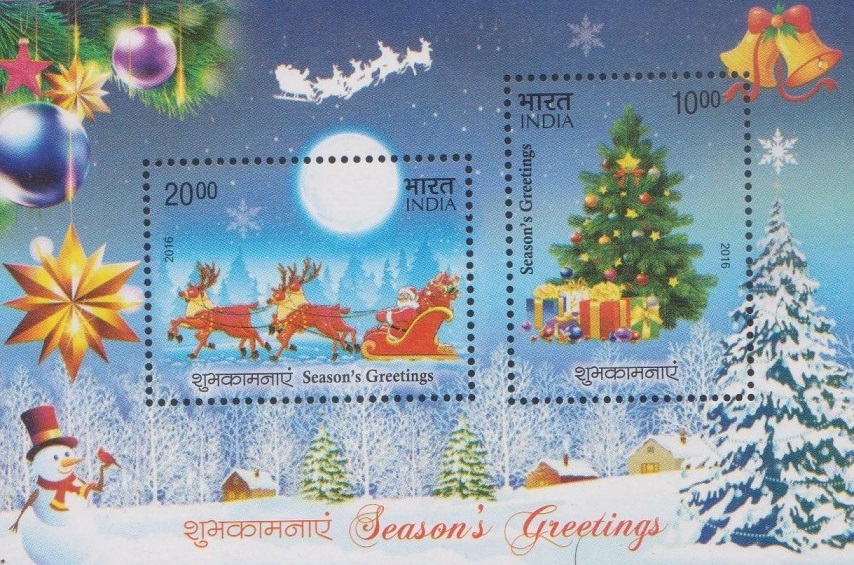
India Season’s Greetings 2016
A Miniature Sheet consisting of 2 nos. of special postage stamp on the Christmas :
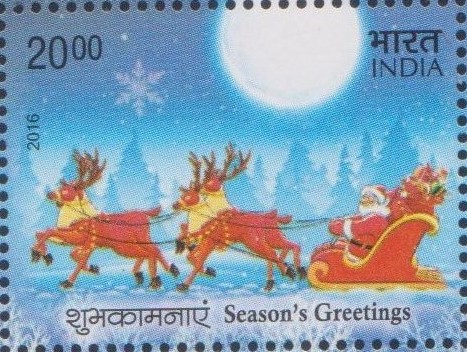

 Issued by India
Issued by India
Issued on Dec 23, 2016
Issued for : The Department of Posts in an attempt to make the medium of communication more evocative, is bringing out two stamps on the theme of Season’s Greetings.
Credits :
Stamp / Miniature Sheet / Sheetlet / FDC / Brochure / Cancellation Cachet : Sh. Brahm Prakash
Type : Miniature Sheet, Mint Condition
Colour : Multi Colour
Denomination : 1000 & 2000 Paise
Miniature Sheet Printed : 0.1 million
Sheetlets Printed : 15000 each (two types)
Printing Process : Wet Offset
Printer : Security Printing Press, Hyderabad
About :
- The exchange of greetings amongst friends has been recorded from ancient times. Different countries and cultures have adopted their own unique ways to express affection, goodwill, gratitude and other sentiments during festivals. The celebrations of festivals serve to fulfil specific communal purposes. They offer a sense of belonging for religious, social, or geographical groups, contributing to group cohesiveness. They bring an opportunity to rejoice and provide an outlet to express the innate happiness. The traditional reasons of celebrations also include entertainment which was particularly important to local communities before the advent of mass-produced entertainment. Festivals that focus on cultural or ethnic topics also seek to inform community members of their traditions; the involvement of elders sharing stories and experience provides a means for unity among families.
- The tradition of sending good wishes at the start of the New Year goes back many centuries, probably beginning with the Chinese and Egyptians who exchanged goodwill messages to ward off evil spirits. Sending them in the form of something written was a Roman tradition of the New Year. Gifts or greetings were sent on December 25th to ensure they arrived by January 1st. Though Christmas was rarely mentioned in this practice it was implied in many cases. The sending of holiday greetings is also tied to the ancient practice of mumming, when neighbours would go door to door dressed in costumes, seeking treats and conveying well wishes for the new year with short plays and performing skits and songs of general merriment.
- The festival of Christmas is celebrated with extreme joy and enthusiasm. Though there are no historical records to tell if Jesus Christ was born on 25th December, but people have started celebrating his birth on this day because it was found favourable for people living in the dark and cold countries, as the day marks the Winter Solstice.
- The legend of Santa Claus which is inseparable from the festival of Christmas, has a reference of St. Nicholas, who was born during the third century in the village of Patara. According to the popular stories, his wealthy parents, who raised him to be a devout Christian, died in an epidemic while Nicholas was still young. Nicholas used his whole inheritance to assist the needy and sick. One of the earliest legends that was attached to his name tells how St Nicholas heard of a man who could not afford the dowries for his three daughters, with the result that he intended – regretfully – to sell them to slavery. St. Nicholas saves them from this fate by throwing three bags of gold through their window at night: it is this tale which is often identified as the root of St Nicholas’s reputation as a gift-giver. He dedicated his life in serving God and was made Bishop of Myra while still a young man. Bishop Nicholas became known throughout the land for his generosity to those in need, his love for children, and his concern for sailors and ships. In the course of the development of his legend, St Nicholas does appear to have taken on some of the qualities/roles that originally belonged to the pagan deities Artemis and Poseidon.
- In 1822, Clement Clarke Moore, an Episcopal minister, wrote a long Christmas poem “An Account of a Visit from St. Nicholas”. Moore’s poem, is largely responsible for our modern image of Santa Claus as the ageless, timeless, deathless white-bearded and red suited man who gives out gifts on Christmas. His poem helped popularize the now-familiar image of a Santa Claus who flew from house to house on Christmas Eve – in “a miniature sleigh” led by eight flying reindeer – leaving presents for deserving children. On January 1st 1881, Harper’s Weekly published Thomas Nast’s most famous image of Santa, complete with a big red belly, an arm full of toys and smoking a pipe! This image of Santa became so popular, that several artists started drawing Santa in his red and white costume. Today children all across the world wait for the gifts on Christmas day with the strong image of red clothed Santa coming on sleigh in the night.
- With time the technology has extended the reach of human, providing several means of conveying Greetings. The exchange of greetings via social media, text, and electronic media has expanded, but the post remains the most popular and predominant mode of transmission. The charm of receiving the greetings with the beautiful stamps embellishing the envelopes is incomparable. It conveys to the recipient the extra effort and care that have gone into it to send the wishes.
- The Department of Posts has been issuing the Seasons’ Greetings from time to time since 1990, and carrying out the role of harbingers of glad tidings. The attempt is always to add an extra dimension to the thought expressed, reinforcing the spirit of the message and making it more eloquent.
- The colourful stamps on Season’s greetings this year have been designed to celebrate the legend of Santa Claus and to evoke the sense of pleasantness and happiness associated with it.
- Text : Based on the material available on internet.


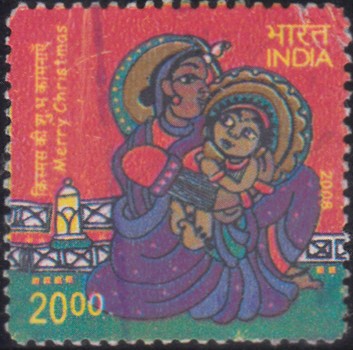


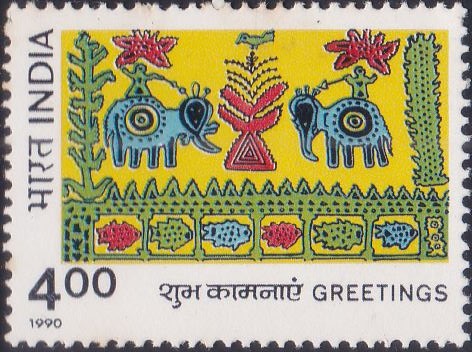
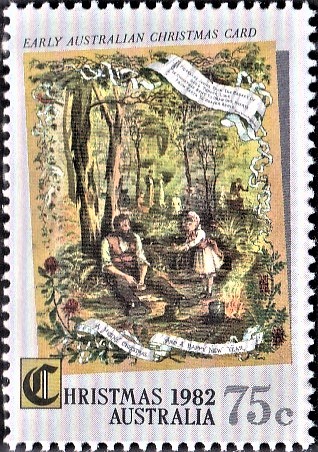
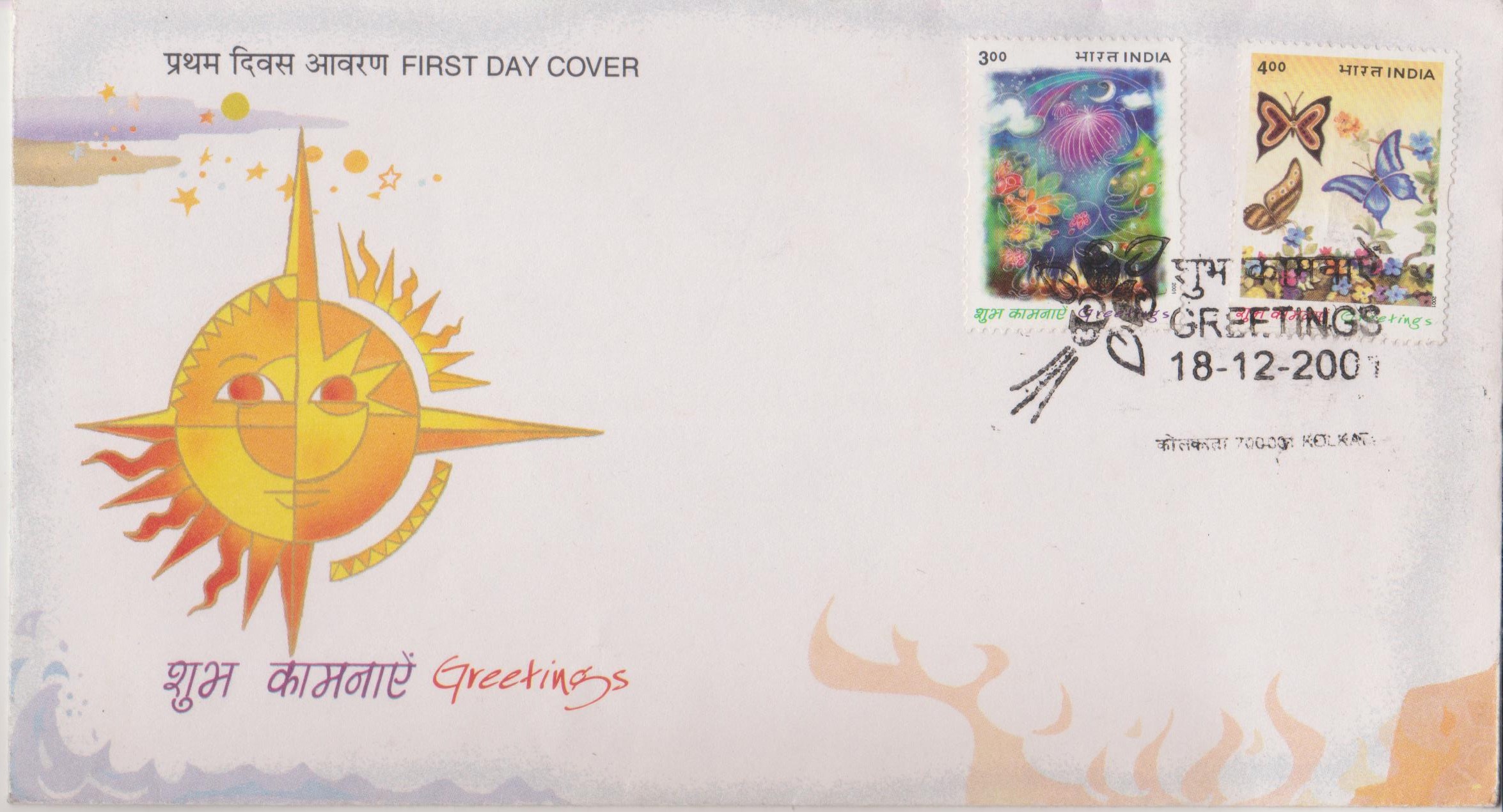
[…] wishing everybody by bringing out different issues during New Year, either as New Year issue or Season’s Greetings. This year the Department is bringing out the rich heritage of India through 12 beautiful Stamps […]